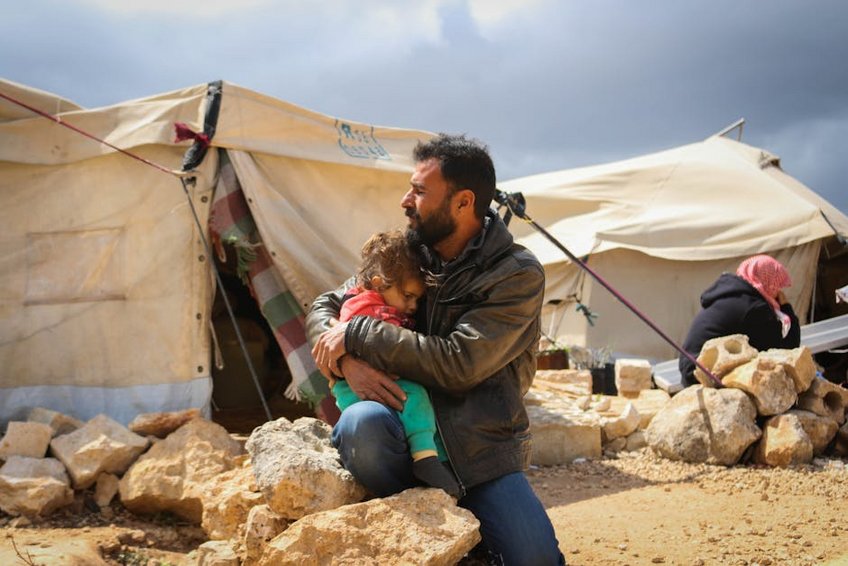Syria Palmyra Desert Oasis: Ancient Ruins and Desert Beauty
Exploring the Syria Palmyra Desert Oasis immerses you in a UNESCO World Heritage site blending Roman architecture with vast desert landscapes. This ancient caravan city features towering temples, grand colonnades, and intricate tombs that reveal centuries of cultural exchange. Your visit uncovers archaeological wonders alongside the resilient oasis environment that sustained civilizations.
Essential Historical and Geographic Information
Palmyra served as a vital trading hub connecting the Roman Empire with Persia, India, and China. The city flourished between the 1st and 3rd centuries AD, becoming one of the wealthiest centers in the ancient world. Its strategic location enabled cultural fusion visible in art and architecture.
The oasis sits in central Syria’s Homs Governorate, surrounded by the Syrian Desert’s arid plains. Water sources from natural springs support palm groves and agriculture, creating a green refuge. Elevations range from 400 meters to 500 meters above sea level across the archaeological zone.
Key Historical Periods
Understanding Palmyra’s timeline enhances appreciation for its layered history.
- Roman Era (1st-3rd century AD): Peak development with Temple of Bel, Great Colonnade, and elaborate necropolises under Queen Zenobia’s rule.
- Byzantine Period (4th-7th century): Christian churches constructed alongside pagan structures before Arab conquest in 634 AD.
- Modern Conservation: UNESCO designation in 1980, followed by restoration efforts and recent stabilization after conflict damage.
- Budget tours cost $1,500-$2,000 for 3-4 days including basic accommodations, guide services, and site permissions from Damascus, excluding international flights and travel insurance.
- Mid-range options at $2,500-$3,500 provide better hotels, more experienced guides, additional site visits, and comprehensive security protocols throughout the itinerary.
- Luxury expeditions reach $4,000-$6,000 featuring expert archaeologists as guides, premium accommodations, private transportation, and exclusive access to restricted areas with maximum safety measures.
- UNESCO World Heritage Centre – Site of Palmyra
- British Museum – Palmyra Collection
Geographic Features and Climate
Palmyra’s desert environment experiences extreme temperature variations between seasons. Summer temperatures frequently reach 104°F (40°C) with minimal rainfall, while winters drop to 41°F (5°C) occasionally. The oasis itself spans approximately 50 hectares with date palms, gardens, and traditional irrigation systems.
Archaeological remains extend across 6 square kilometers, including the main city center and outlying tower tombs. Visitors navigate between shaded colonnades and open desert vistas throughout the site. Proper hydration and sun protection remain essential year-round.
Cultural Significance and Preservation
Palmyra represents a unique synthesis of Greco-Roman, Persian, and local Arab influences in art and architecture. The city’s Aramaic and Greek inscriptions provide invaluable insights into ancient trade networks and social structures. International organizations continue documenting and stabilizing the site following recent conflicts.
Local Bedouin communities maintain cultural connections to the oasis through traditional knowledge and oral histories. Their expertise in desert survival complements archaeological understanding of how ancient Palmyrenes thrived here. Respectful engagement with these traditions enriches the visitor experience.

Alt: “palmyra-ruins-desert-oasis-syria-archaeology”
Syria Palmyra Desert Oasis – Planning Your Trip
Organizing your Syria Palmyra Desert Oasis visit requires careful timing and logistical preparation due to current conditions. The spring months from March to May offer the most comfortable weather for exploration, with temperatures between 59°F and 77°F (15°C-25°C). Autumn from September to November provides similar conditions before winter chill sets in.
Security conditions remain fluid, requiring monitoring of travel advisories from your government before departure. Most visitors access the site through organized tours with experienced local guides who understand current protocols. These arrangements typically include transportation from Damascus or Homs with necessary permissions.
Best Time to Visit Palmyra
Visit between March and May for optimal photography conditions and manageable crowd levels at the archaeological site. Daytime temperatures average 68°F (20°C) with cooler evenings around 50°F (10°C), perfect for extended exploration. Shoulder seasons avoid the extreme summer heat that regularly exceeds 100°F (38°C).
October and November offer similar advantages with slightly fewer visitors and golden hour lighting enhancing the stone ruins. Winter months from December to February bring colder conditions down to 32°F (0°C) at night, but clearer skies for landscape photography. Always verify current access conditions regardless of season.
Budget Planning and Costs
Budget considerations vary significantly based on tour inclusions and security arrangements.
Essential Preparation Checklist
Pack lightweight, breathable clothing that covers arms and legs for sun protection and cultural respect. Include a wide-brimmed hat, sunglasses, and high-SPF sunscreen for extended outdoor exposure. Sturdy walking shoes with good traction handle uneven terrain across the archaeological site.
Documentation requires a valid passport with Syrian visa obtained in advance through authorized tour operators. Comprehensive travel insurance with medical evacuation coverage remains mandatory. Learn basic Arabic phrases and research current cultural norms before departure.
Top Archaeological Attractions and Activities
Palmyra’s monumental architecture showcases the city’s historical importance as a crossroads of civilizations. The Temple of Bel complex demonstrates sophisticated engineering with its massive courtyard and sanctuary design. Walking the Grand Colonnade reveals the scale of urban planning with its 1,100-meter length flanked by columns.
Necropolises outside the city center feature elaborate tower tombs and underground burial chambers with detailed frescoes. The Roman Theater provided entertainment for thousands of residents during the city’s peak. Recent stabilization work allows safer access to these structures while preserving their integrity.
Must-See Highlights
The Temple of Bel complex spans approximately 4 hectares with its iconic entrance arch and central altar structure. Originally dedicated to the Mesopotamian god Bel, the temple incorporated elements from multiple religious traditions. Restoration work continues on the damaged portions while maintaining the site’s historical authenticity.
Palmyra’s Grand Colonnade connected major public spaces with shops and monuments along its route. The Tetrapylon monument marks a key intersection with 16 reconstructed granite columns. Early morning visits provide the best photography opportunities with soft light illuminating the stone surfaces.
The Valley of the Tombs contains numerous multi-story tower tombs used by wealthy families for generations. The Tomb of Three Brothers features well-preserved interior decorations and inscriptions. Guided tours explain funerary practices and social hierarchy in ancient Palmyrene society.
Hidden Gems and Local Favorites
Diocletian’s Camp offers panoramic views over the entire archaeological site from its hilltop position. This Roman military complex includes barracks, storage facilities, and command structures rarely included on standard tours. Local guides can arrange sunrise visits for exceptional photography conditions.
The Palmyra Museum houses artifacts rescued during recent conflicts, including sculptures, mosaics, and everyday objects. Though the main building sustained damage, curated displays in temporary facilities showcase the city’s artistic heritage. Supporting local craftspeople through purchased reproductions helps sustain community livelihoods.
Archaeological Photography Tips
Capture the ruins during golden hour when low-angle sunlight emphasizes texture and depth in the stonework. Use a polarizing filter to reduce glare from desert surfaces and enhance sky contrast. Include human scale references like fellow travelers to convey the monumental proportions of structures.
Document details like inscriptions and carvings that reveal craftsmanship techniques. Respect any photography restrictions in sensitive areas under restoration. Backup images frequently and protect equipment from fine desert dust that can damage camera mechanisms.
Practical Travel Information and Logistics
Current access to Palmyra occurs primarily through authorized tour operators who handle security arrangements and permits. Most itineraries originate in Damascus with overland transportation averaging 3-4 hours each way. Alternative routes from Homs reduce travel time to approximately 2 hours depending on checkpoints.
Accommodation options near the site remain limited, with most visitors returning to Damascus or Homs for overnight stays. Basic guesthouses in nearby Tadmor provide the closest lodging but vary in amenities and reliability. Verify current conditions with your tour operator before committing to specific arrangements.
| Category | Options/Features | Price Range (USD) |
|---|---|---|
| Accommodation | Damascus hotels with security, breakfast, Wi-Fi | $80-$150/night |
| Transportation | Private car with driver, guide, fuel included | $100-$200/day |
| Guided Tours | Archaeologist-led, small groups, permissions | $300-$500/day |
| Entrance Fees | Site access, museum, special permits included | $50-$100 total |


